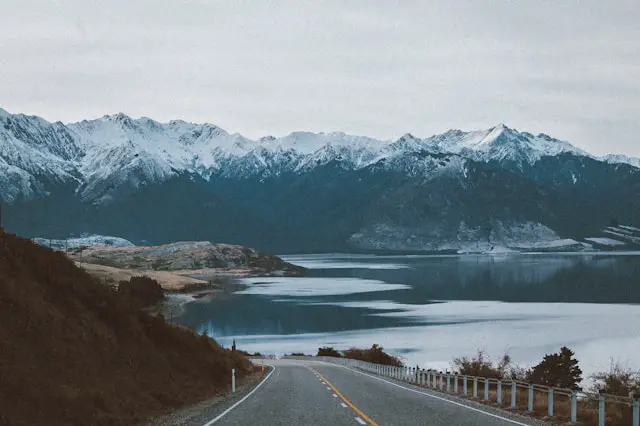Alaska, known for its breathtaking landscapes, diverse wildlife, and pristine wilderness, is a destination that attracts nature lovers and adventurers alike. However, visitors often wonder about the presence of bugs during the Alaskan summer months. The answer is yes, Alaska does experience a bug season in the summer, and here’s what you should know about it.
The Alaskan Bug Season
The bug season in Alaska typically runs from late May through July. This period coincides with the warmer and wetter months of the year, creating ideal conditions for insects to thrive. The most common bugs during this time are mosquitoes, black flies, no-see-ums (biting midges), and various types of gnats.
Mosquitoes
Mosquitoes are perhaps the most notorious of the Alaskan bugs. Due to the vast wetlands, standing water, and long daylight hours in summer, mosquitoes can breed in large numbers. In some areas, particularly in the Interior and the Arctic regions, the mosquito population can become quite dense, leading to what locals sometimes refer to as the “Alaskan state bird.”
Black Flies and No-see-ums
Black flies and no-see-ums are also prevalent during the Alaskan summer. Black flies are typically found near fast-flowing streams and rivers, while no-see-ums, as their name suggests, are so small they’re hard to see but can leave itchy bites. These insects are particularly active during the early morning and late evening hours.

Dealing with Bugs in Alaska
While the presence of bugs in Alaska during the summer can be a nuisance, there are several ways to mitigate their impact on your outdoor adventures:
Repellents: Using insect repellent containing DEET, picaridin, or oil of lemon eucalyptus can provide protection against bites.
Clothing: Wearing long sleeves, pants, and a hat can physically block bugs from reaching your skin. Mesh bug jackets or head nets are also effective, especially in areas with high bug density.
Timing: Planning your outdoor activities for times when bugs are less active, such as midday or on windy days, can reduce encounters with mosquitoes and other insects.
Campsites: When camping, choose sites that are away from standing water and are exposed to breezes, which can help keep the bugs at bay.
Yes, there are bugs in Alaska during the summer, but don’t let that deter you from exploring this magnificent wilderness. With the right preparations and precautions, you can enjoy the great outdoors with minimal interference from the insect population. Remember, the presence of bugs is a small price to pay for the incredible natural beauty and unique experiences that Alaska has to offer during its vibrant summer months.
The summer bug season, while a notable aspect of the Alaskan outdoors, also plays an essential role in the region’s ecosystem. These insects serve as a crucial food source for many bird species, fish, and other wildlife, contributing to the biodiversity that makes Alaska so special. Understanding this natural cycle can enhance your appreciation of the Alaskan wilderness, even when you’re swatting away mosquitoes.

Tips for Enjoying Alaska Despite the Bugs
Stay Informed: Before heading into particular areas, check local resources or ask park rangers about current bug conditions. This information can help you prepare adequately.
Use Physical Barriers: In addition to clothing, consider using tents with bug nets for sleeping and eating. These can provide a much-needed respite during peak bug times.
Embrace the Experience: Part of the adventure of visiting places as wild and pristine as Alaska is dealing with the elements, including bugs. Embracing this aspect can make your trip more memorable.
Choose the Right Time: If you’re particularly sensitive to bugs, consider visiting Alaska towards the end of summer or in early fall. Although mosquitoes and flies start to dwindle, you’ll still have plenty of daylight to explore, and the changing colors of the landscape offer a different kind of beauty.
The Silver Lining
Besides their role in the food chain, the presence of bugs can also be seen as a natural deterrent against overcrowding in the most pristine areas. Those willing to prepare and cope with the insects will find themselves in some of the most untouched and breathtaking environments on Earth. This natural balance ensures that Alaska’s wilderness remains a sanctuary for wildlife and a haven for those seeking solitude and a deep connection with nature.
A Unique Part of Alaskan Summers
In conclusion, bugs are indeed a significant part of the Alaskan summer experience. They remind us of the raw, untamed nature of the wilderness we are privileged to visit. With the right preparations and attitude, the bug season can be managed, ensuring that your Alaskan adventure is nothing short of extraordinary. The vast landscapes, the midnight sun, the wildlife, and even the bugs themselves weave together to create the unforgettable tapestry that is summer in Alaska.

Frequently Asked Questions About Bugs in Alaska in the Summer
Are all areas of Alaska affected by bugs in the summer?
While bugs are prevalent throughout Alaska in the summer, their density can vary significantly from one region to another. Areas with lots of standing water, such as the Interior and the Arctic regions, tend to have higher concentrations of mosquitoes. Coastal areas and higher elevations may have fewer bugs.
Can bug activity affect outdoor activities in Alaska?
Yes, bug activity can impact outdoor activities, especially in areas where mosquitoes and flies are dense. However, with proper preparation and protective measures, you can still enjoy hiking, fishing, camping, and other outdoor activities. Being informed about the current bug conditions can help you plan your activities accordingly.
Are there any natural ways to repel bugs in Alaska?
In addition to commercial insect repellents, there are natural methods that some find effective. These include using essential oils like citronella, eucalyptus, and lavender. Wearing light-colored clothing can also help, as bugs are often more attracted to dark colors. However, the effectiveness of natural methods can vary, and they might not offer the same level of protection as products containing DEET or picaridin.
How long does the bug season last in Alaska?
The bug season in Alaska typically peaks from late May through July. However, the duration can vary depending on the weather conditions each year. A colder and longer winter may delay the onset of the bug season, while a warm, early spring can extend it.
Do bugs in Alaska carry diseases?
In Alaska, the risk of contracting diseases from mosquito and fly bites is significantly lower than in many other parts of the world. However, as with any area where mosquitoes are present, there’s always a minimal risk of diseases. It’s always a good idea to take preventive measures against bug bites to avoid any potential health issues.
What should I do if I have an allergic reaction to bug bites in Alaska?
If you experience a severe reaction to bug bites, such as excessive swelling, difficulty breathing, or dizziness, seek medical attention immediately. For mild reactions, over-the-counter antihistamines and topical creams can help alleviate itching and swelling. It’s wise to carry a basic first-aid kit with you when exploring the outdoors in Alaska.
Are there any bug-free times to visit Alaska?
If you want to minimize your exposure to bugs, consider visiting Alaska in the late spring (May) or late summer to early fall (late August through September). During these times, bug populations are generally lower, and you’ll still be able to enjoy the beauty of Alaska with fewer nuisances. Plus, fall offers the added bonus of spectacular autumn foliage.
While bugs are a part of the Alaskan summer, they shouldn’t deter you from exploring this majestic wilderness. With the right preparation and precautions, you can enjoy all that Alaska has to offer, from its stunning landscapes and wildlife to its vibrant cultures and communities. Remember, the bugs are just one small part of the Alaskan experience, and the memories you’ll make in this incredible place will far outweigh any temporary discomfort.














